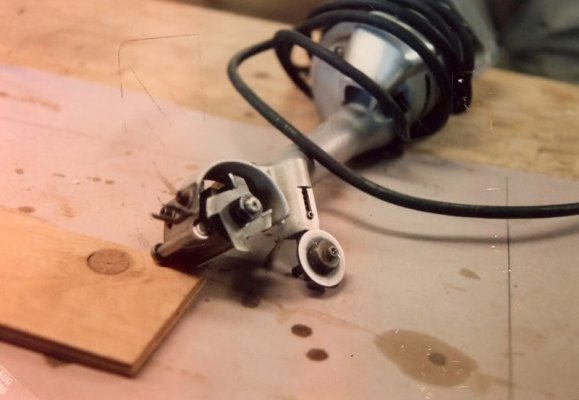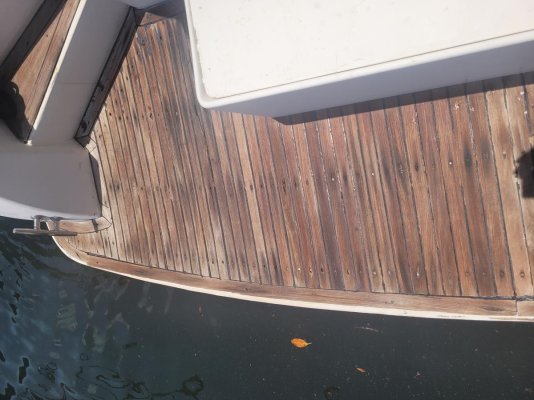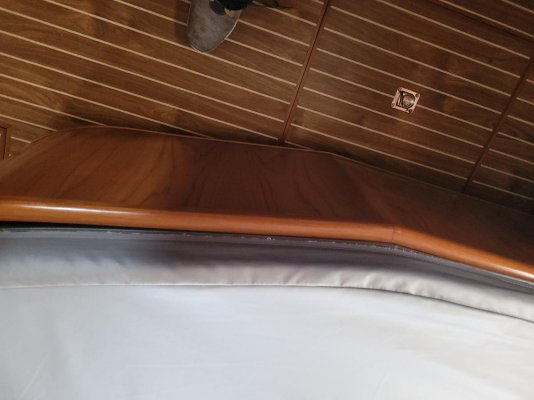Teak deck covering
In checking the prior posts I note several questions have arisen about repairs to teak decks. I covered this extensively in an article that I wrote for PASSAGEMAKER magazine and published in 1998. It was also posted to this list.
Briefly I did not remove the outdoor teak, interior teak was not considered----it was not leaking!
Anyway, I used "pickup truck bed liner" material and it worked GREAT.
Recall that was in 1998.
Once on it is there permanently. It is used in warehouses for forklifts to drive on and such. It is tough, used on stern rollers for cables dragged by offshore oil vessels and such.
(That is how I got the idea to do it) I have seen it on the decks around swimming pools on cruise ships. It is also used in Zoo's in large wild animal enclosures.
Once on, it appears to be a deck with non-skid.
The product available then is not what is available today. Today's products are more user friendly and do not require the heavy duty compressor that was then required.
As I have answered many I would do it again.
I applied it to address teak deck LEAKS. It does fix the leaks----MY EXPERIENCE.
In the article, it is in this sites archives , I am sure as it was discussed for months with virtually every criticism that could be conjured up!

One must address the water in the plywood under the deck fiberglass, again I go into DETAIL on how to address that. It was actually much easier than anticipated.
As I recall the moderators don't care for re-posting of past posts.
The one change that I would do is take the material about 4-5 inches above the deck on the wall of the cabins and or the gunnels though I never had any leaks there.
I found on pulling up some of the teak looking for leaks it(mine) did not come up easily at all and it was being destroyed, mine was firmly glued and screwed. So renewing the caulking is mostly useless, IN MY CASE. I always stress what I DID and my findings--no speculation.
I also experienced some of the glass coming up with the teak. YMMV.
I will answer any questions. If you are unable to locate the thread.

Again, I was most satisfied with the outcome of the project, it looks great, solved the deck leaks and addressed the wet plywood.
No one ever came on the boat and even noticed what I had on the deck. We traveled a lot on the boat afterward and I even saw it on a Krogan down in the keys as well as a Grand Banks.
Several criticized me for covering $15,000 worth of teak!
It was not worth that to me leaking. I offered to have one to come remove for FREE but he had to fix the glass underneath. He declined, so I guess that it was not worth even that much less 15 grand.




